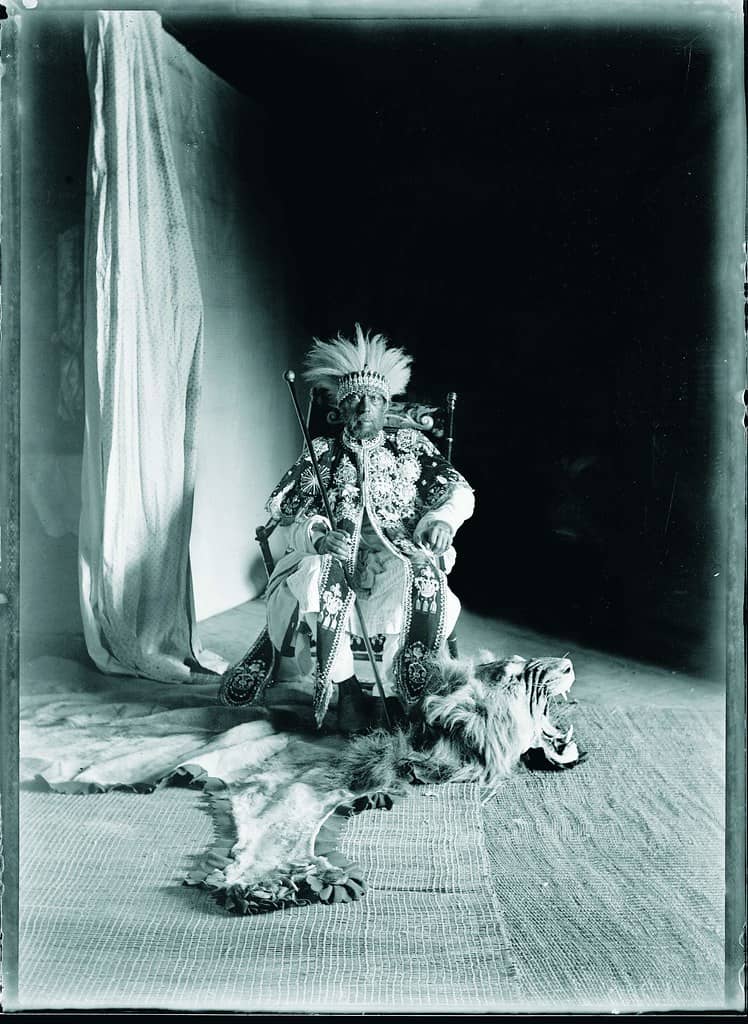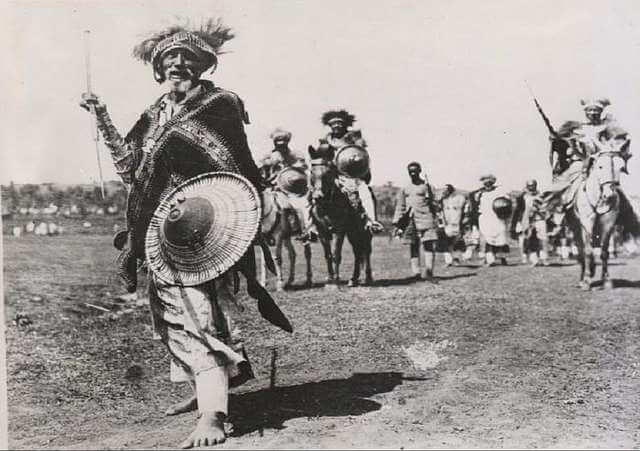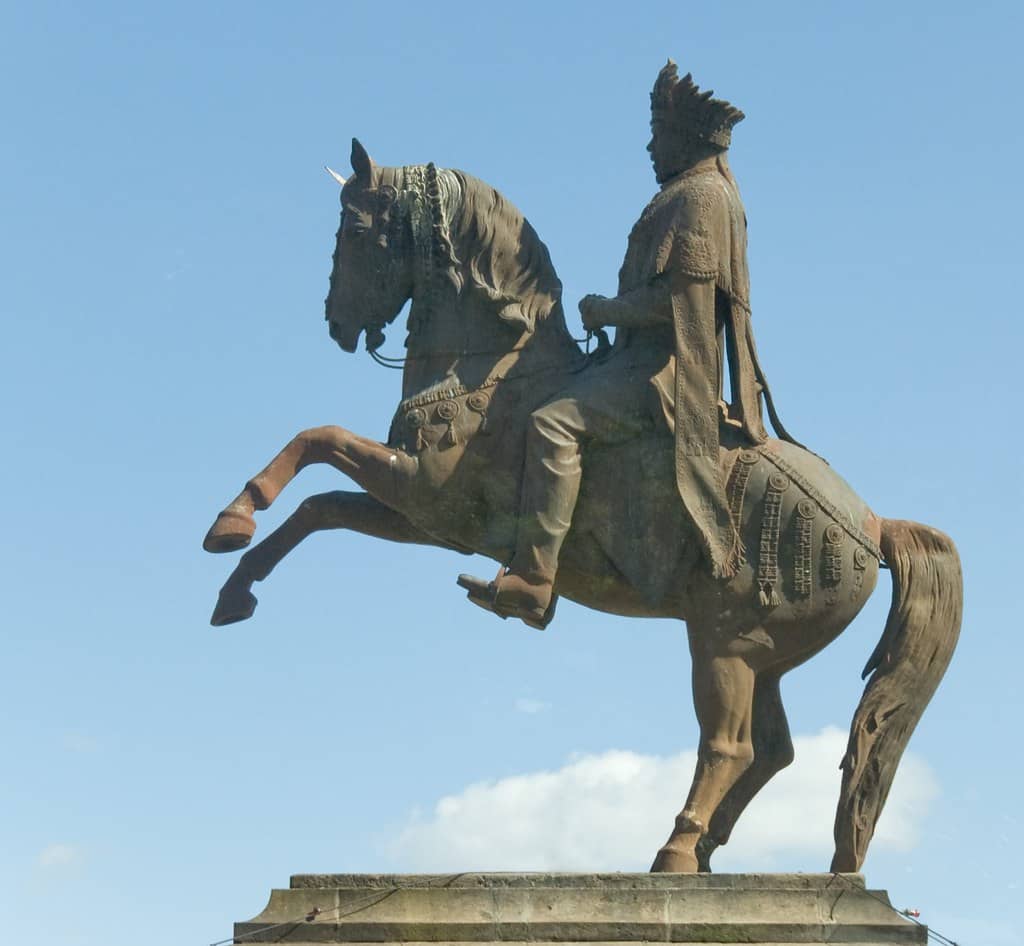- Home
- Emperor Menelik II: The Unifying Figure in Ethiopia
Emperor Menelik II: The Unifying Figure in Ethiopia
Discover the legacy of Emperor Menelik II of Ethiopia, his role in the Battle of Adwa, and his efforts to unite and modernize the African nation.
Table of Contents
Who is Menelik II of ethiopia
Emperor Menelik II holds an irreplaceable place in the fabric of Ethiopian history as the epitome of unity and resilience. His reign during the late 19th and early 20th centuries showcased the power of a determined leader standing resolute against foreign invasions, notably the Italians at the Battle of Adwa in 1896. Menelik II passionately worked toward unifying Ethiopia’s diverse ethnic groups and paved the way for today’s sovereign nation. Examining his reign offers an intriguing glimpse into the robust foundation of Ethiopian unity and resilience that continues to influence the nation’s trajectory.
The Rise of Menelik II: From Shewa to the Throne of Ethiopia

Birth and Early Life of Menelik II in Shewa, 1844
Ethiopia, where in 1844, the story of Emperor Menelik II began. Born Sahle Maryam, his early years in this politically and culturally vibrant region were instrumental in shaping his future as a unifying leader.
Shewa, a region steeped in history and Ethiopian traditions, was the cradle of Menelik II’s childhood. Here, amid tales of King Solomon and the Queen of Sheba, young Sahle Maryam learned about leadership and governance, laying the foundation for his vision of a united Ethiopia.
His upbringing, marked by the era’s turmoil and power struggles, prepared him for the complexities of his future role. These formative experiences in Shewa were not just personal milestones but significant chapters in Ethiopian history, setting the stage for his ascension to the throne.
As we delve into Menelik II’s life, let’s remember his roots in Shewa, a region integral to his journey from a young noble to a nation-changing emperor. Join us in exploring the remarkable life of Menelik II, a story deeply intertwined with Ethiopia’s identity and legacy.

Menelik II’s Ascension to King of Shewa in 1865
Menelik’s early rule in Shewa was a complex dance of diplomacy and strategy. He faced numerous challenges, both from internal rivals and the overarching threat of foreign powers eyeing Ethiopia. His ability to navigate these challenges was remarkable, demonstrating an acute sense of political acumen.
Menelik’s reign in Shewa was not just about survival; it was about expansion and consolidation. He embarked on a series of military campaigns, extending his influence beyond Shewa and laying the groundwork for what would become a unified Ethiopia. His strategies were a blend of military might and shrewd alliances, as detailed in scholarly works found in the archives of the African Studies Association.
The climax of Menelik’s rise was his eventual ascension to the Ethiopian throne in 1889. This momentous event was not just a personal achievement but a significant milestone in Ethiopia’s history, marking the beginning of a new era. The National Museum of Ethiopia in Addis Ababa presents a fascinating collection that includes artifacts from Menelik’s reign, offering a tangible connection to this pivotal period in Ethiopian history.

Crowning of Menelik II as Emperor of Ethiopia, 1889
The ascension of Menelik II to the Ethiopian throne in 1889 marked a significant turning point in the history of Ethiopia, solidifying his legacy as a unifying figure and an architect of resilience.
1889 was a year of monumental change. Menelik II’s coronation as Emperor of Ethiopia wasn’t just a ceremony; it was the culmination of years of political maneuvering and strategic alliances. This transition from the King of Shewa to the Emperor of Ethiopia signified a new era of leadership and unity for the country. For a detailed account of the historical context and significance of this event, the Ethiopian Historical Society offers insightful resources.
Menelik II’s leadership was characterized by his diplomatic skills and military prowess, which played a crucial role in defending Ethiopia’s sovereignty, especially against colonial powers. His reign witnessed significant developments, including the famed Battle of Adwa, which solidified Ethiopia’s place as a resilient and independent nation. Academic journals and publications from the African Studies Association provide a wealth of information on this period.
Subscribe to stay up-to-date with Ethiopia
Get the Free monthly newsletter

Emperor Menelik II and The Battle of Adwa

Role of Menelik II and Empress Taytu in the Battle of Adwa, 1896
The Battle of Adwa in 1896 stands as a defining moment in Ethiopian history, with Emperor Menelik II and Empress Taytu playing pivotal roles in this historic victory. This momentous event not only showcased their leadership but also marked Ethiopia’s resistance against colonial expansion.
Menelik II’s role in the Battle of Adwa was marked by astute military strategy and diplomatic prowess. He managed to galvanize various Ethiopian regions, fostering a unified front against the Italian invaders. Empress Taytu, equally significant, contributed both as a strategist and a morale booster. She personally supervised the preparation of supplies and even took part in the battle, exemplifying exceptional leadership. The details of their strategies and the battle’s significance can be further explored through articles and documentaries provided by the Ethiopian Cultural Heritage Institute.
The victory at Adwa was more than a military triumph; it was a symbol of African resistance and resilience against European colonialism. This victory ensured Ethiopia’s sovereignty and had a far-reaching impact on the perception of African capabilities globally. The African Union archives provide extensive materials that delve into the broader implications of this victory for Africa and its place in the global context.

Significance of the Battle of Adwa to Ethiopia’s Independence
The Battle of Adwa, fought on March 1, 1896, under the leadership of Emperor Menelik II, is not just a page in Ethiopian history books; it’s a testament to Ethiopia’s resilience and strategic prowess. This decisive victory over Italian forces is a cornerstone of Ethiopian independence and a powerful symbol of resistance against colonialism. For further in-depth exploration of this historical event,
The Battle of Adwa was more than a military triumph; it was a resounding statement of defiance against European imperialism. Menelik II’s leadership exemplified the ability of African nations to defend their sovereignty. The battle’s outcome had a ripple effect across the continent, inspiring other nations in their struggles against colonial powers.
Menelik II’s victory at Adwa played a crucial role in preserving Ethiopia’s independence at a time when Africa was being partitioned by European powers. This victory is seen as a pivotal moment that helped Ethiopia avoid the fate of colonization, allowing it to maintain its own cultural and political identity. It’s also a significant event that contributed to the recognition of Ethiopia’s sovereignty by external powers.

How The Battle of Adwa Reflected on Menelik II's Leadership
The Battle of Adwa, a defining moment in Ethiopian and African history, was fought on March 1, 1896. This battle was not just a military confrontation but a reflection of Emperor Menelik II’s exceptional leadership and strategic acumen. His ability to unite various Ethiopian regions and ethnic groups against a common enemy showcases his diplomatic and military prowess.
Under Menelik II’s leadership, Ethiopia became a symbol of resistance against European colonization. His role in the Battle of Adwa was instrumental in maintaining Ethiopia’s sovereignty and inspiring a sense of national unity. This historical event stands as a testament to the power of cohesive leadership in the face of external threats.
Menelik II’s diplomatic skills were crucial in securing weapons and alliances that were pivotal in the battle. His foresight in understanding the geopolitical landscape and leveraging it to Ethiopia’s advantage is a case study in visionary leadership.
The Prosperous Reign of Emperor Menelik II

Architectural Growth in Addis Ababa: Menelik II’s Capital
Under Emperor Menelik II, Addis Ababa witnessed a transformative era, blossoming from a modest settlement into a vibrant capital. This period marked the onset of significant architectural growth, a testament to Menelik II’s vision for a modern Ethiopia.
Menelik II’s reign saw innovative urban planning and the introduction of novel construction techniques. His influence led to the incorporation of European styles mixed with traditional Ethiopian aesthetics, creating a unique architectural identity for Addis Ababa.
A significant aspect of Menelik II’s legacy in Addis Ababa is the establishment of key institutions and infrastructure. This period saw the construction of schools, hospitals, and government buildings, laying the foundation for a modern administrative state.
Addis Ababa, under Menelik II, emerged as the heart of Ethiopia’s journey towards modernization. This urban renaissance not only elevated the city’s status but also reflected the broader aspirations of the Ethiopian empire under Menelik’s leadership.

The Establishment of Modern Ethiopia, and Menelik II's Influence
Emperor Menelik II’s reign was a pivotal period in the establishment of modern Ethiopia. His leadership extended beyond military conquests to the realms of administration, society, and economy. This period marked the delineation of Ethiopia’s boundaries, unification of various states, and introduction of a central government system.
Menelik II introduced significant economic and social reforms, laying the groundwork for a modern Ethiopian state. These reforms included the introduction of a modern currency system, establishment of a postal service, and initiation of the first telephone and telegraph lines.
Menelik II’s era was not just about internal development; it also marked Ethiopia’s entry into international diplomacy. His ability to negotiate with foreign powers and maintain Ethiopia’s sovereignty in the face of colonial pressures was crucial in shaping the nation’s international standing.
Conclusion
Emperor Menelik II’s reign marks a pivotal chapter in Ethiopian history, transforming the nation into a symbol of resilience and progress. His visionary leadership is most evident in the architectural evolution of Addis Ababa, reflecting the birth of modern Ethiopia and its steadfast independence, epitomized by the historic victory at the Battle of Adwa. Menelik II’s legacy continues to inspire, serving as a beacon of unity, strength, and diplomatic acumen. His enduring influence, celebrated in various academic and cultural resources, resonates beyond his time, guiding Ethiopia towards a future anchored in unity and dynamic growth.
Subscribe to stay up-to-date with Ethiopia
Get the Free monthly newsletter

FAQ
Most frequent questions and answers
Who was Emperor Menelik II of Ethiopia and what was his role in the defense against the Italians?
Emperor Menelik II of Ethiopia, also known as Sahle Mariam, was the ruler from 1889 to 1913. He is celebrated for leading the Ethiopians to a victorious battle against the Italians in 1896 at the Battle of Adwa, which is regarded as a key moment in the recognition of Ethiopia’s independence by external powers.
How was Menelik II of Ethiopia able to unite different factions in Ethiopia to fight against the Italians?
Menelik II was a skilled diplomatic and military strategist. He successfully woven alliances with different ethnic and religious groups inside Ethiopia. Leveraging this unity, Menelik was able to lead the Ethiopians to victory against the Italians, thereby securing Ethiopia’s position as an independent and sovereign state in a largely colonized Africa.
What was the significance of the Treaty of Wuchale to Emperor Menelik II of Ethiopia and the Italians?
The Treaty of Wuchale was a significant point of contention between Emperor Menelik II and the Italians. Signed in 1889, the Italians tried to use the treaty to establish a protectorate over Ethiopia, however, Menelik opposed this vehemently, stating that the Amharic version of the treaty did not grant Italy a protectorate. The dispute eventually led to the Battle of Adwa, which resulted in a decisive Ethiopian victory and recognition of Ethiopia’s independence.
How did Emperor Menelik II's reign impact the history of Ethiopia?
Emperor Menelik II had a profound impact on the history of Ethiopia. His reign resulted in the preservation and expansion of Ethiopia’s independence during a time when most of Africa was being colonized by European powers. He also brought about modernization efforts, including the introduction of telegraph and rail lines, modern schools, and newspapers.
Was Eritrea a part of Ethiopia during the reign of Emperor Menelik II?
Eritrea was not part of Ethiopia during the reign of Emperor Menelik II. Eritrea was colonized by Italy during his reign and was only merged with Ethiopia after World War II.
How did the Italians react after their defeat at the Battle of Adwa?
After their defeat in the Battle of Adwa, the Italians were forced to recognize Ethiopia’s independence in the Treaty of Addis Ababa. The Battle of Adwa was a significant event which marked the first time a colonizing power was defeated by African forces, leaving a strong imprint on Italy’s national consciousness.
What were some of the primary contributions of Queen of Sheba to Emperor Menelik II's lineage and claim to power?
The Queen of Sheba is a central figure in Ethiopian tradition and history. It is believed that Emperor Menelik II was a direct descendant of the Queen of Sheba and King Solomon, which gave him a divine right to rule. This lineage played a significant role in affirming his authority and legitimacy as the Emperor of Ethiopia.
Can you explicate the expansion of Ethiopian boundaries during Emperor Menelik II's reign?
Emperor Menelik II undertook a rigorous campaign of territorial expansion. He successfully maintained control over traditional Ethiopian territories and annexed new territories, including the Oromo and Somali lands, thus significantly extending the nation’s borders. This resulted in the Ethiopia we know today.
How and when did Emperor Menelik II die?
Emperor Menelik II suffered a severe stroke in 1906, which left him incapable of ruling. His wife, Empress Taytu Betul, initially took over the administration. However, due to political infighting, Menelik II’s grandson, Lij Iyasu, was eventually appointed as the heir. Emperor Menelik II died on December 12, 1913.
Introducing Noah Mohamed, a seasoned expert in both SEO and PPC, who has dedicated the last 5 years to mastering the intricacies of digital marketing. Noah’s approach is data-driven and results-oriented, focusing on maximizing return on investment for PPC campaigns while building sustainable organic growth through SEO. His ability to analyze market trends and adapt strategies accordingly makes him an invaluable asset to our team and clients alike.

